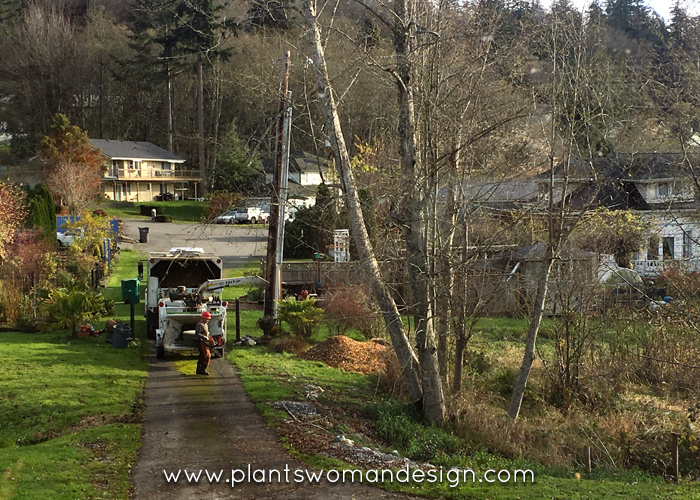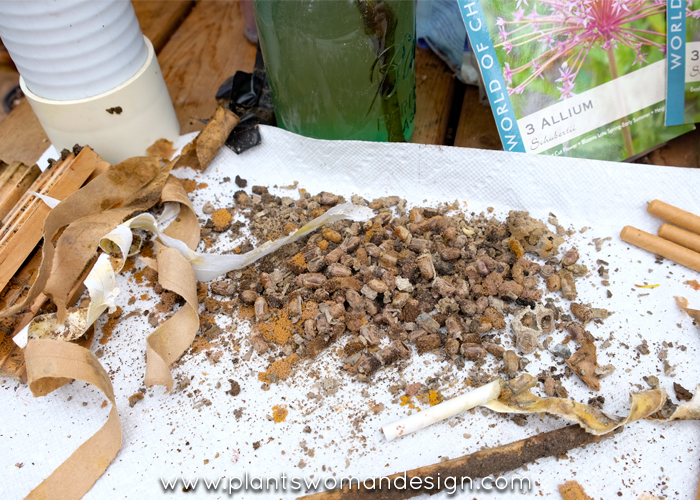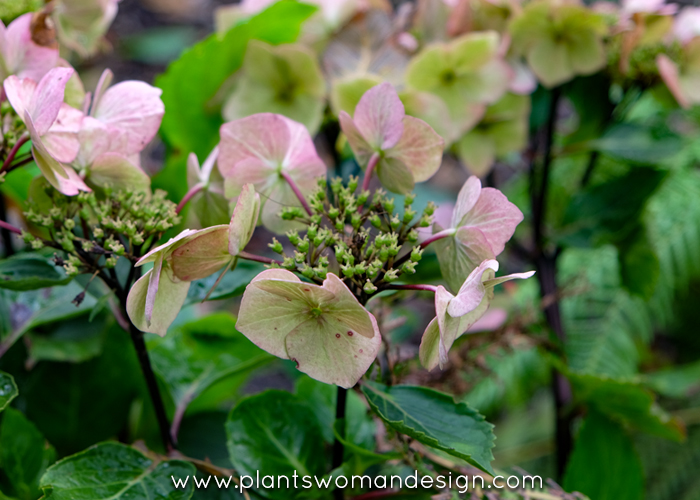
Winter Garden Tasks
Now that the dead trees are gone from the front of the driveway I need to put in new screening trees. Having a large space to work with gives me the opportunity to finally get some of the large trees I’ve been wishing for.
Large trees are best viewed from a distance. This gives you the opportunity to take in the total lovely shape and structure of the tree. The distance to the front of the drive from the house is about 100 feet which is perfect for the larger scale trees I have in mind.
The decision between evergreen and deciduous is always a consideration. I love the fall color of the deciduous trees along with the fresh green in the spring. The screening doesn’t necessarily need to be high because there is only one two story house nearby that doesn’t face my house. I have several large evergreen trees (conifers) on the property already. My neighbors garden is also a consideration. If I plant dense evergreen trees it will eventually shade out a corner of her garden.
This area is also very moist. There are drainage pipes throughout the area that drain excess moisture into the stream area. Trees that like a dry area (like Pine) will be unhappy there.
I will likely choose my replacement trees from the following list…
October Glory Maple – Acer rubrum ‘October Glory’
A Norway maple that matures quickly into an oval shaped 40 ft tree. The brilliant red leaves stay on for a long while. Small red flowers with fresh green leaves greet you in the spring. Not fussy about site considerations but does need full sun to have good shape and good fall color.

Red Sunset Maple – Acer rubrum ‘Franksred’
This is another great cultivar. Growing fast to eventually reach 60 feet the spectacular fall color is in colors of orange and red. The samara, (helicopter seed pods), are red and also beautiful.

Black Gum Tree (Nyssa sylvatica)
A beautiful and fairly unknown tree is the Nyssa sylvatica or black gum tree. Hardy to zone 3 with a height of 50 feet, it likes full sun or part shade. Especially good to know is that it likes wet feet. The area by the drive entry has a lot of water from the property behind me.

American Basswood (Linden)
While visiting family in the Chicago area I became enthralled with the Linden Tree or American basswood. The tilia Americana has much to recommend it. Lovely large tree smothered in fragrant small yellow flowers in the spring, I would love to try and grow it. It is hard to believe that it is considered weak and susceptible to wind damage while being one of the most used trees in the streets of Chicago, one of the windiest cities in the US. This tree reaches over 50 feet with good rounded branching structure. A good source of nectar for honey bees, and shelter for small mammals. Two things to consider are an intolerance for salt spray and need for good drainage. It does like moist soil so there is a good possibility that the area could be moist enough without being too soggy.

I have several other trees on the property including the Katsura, River birch, two Cornus, Ginko, several magnolias, eucalyptus, Dove Tree, and horsechestnuts. Two palm trees flank the drive for the evergreen elements there. Now I just have to decide! I welcome any suggestions from you!
*occasional water after tree is established





















































